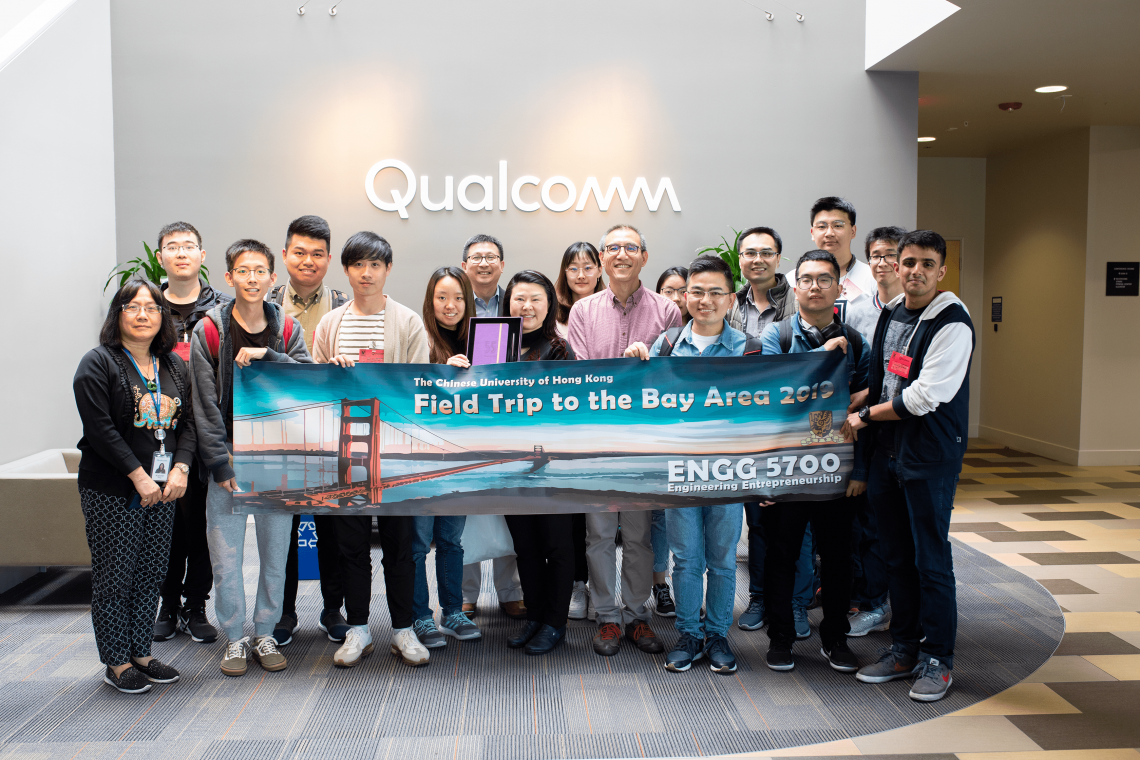
Qualcomm - by Yuanyuan Wei
For the purpose of creating “quality communications”, Qualcomm Incorporated is an American multinational semiconductor and telecommunications equipment company that designs and markets wireless telecommunications products and services. As one of the wholly-owned subsidiaries by Qualcomm Incorporated, the company we visited, Qualcomm Technologies, Inc. (QTI), operates nearly all of Qualcomm's R&D activities.
The host Dr. Xu got his Bachelor's Degree in Engineering in Tsinghua University in 2013 and his Ph.D. degree in Electrical and Computer Engineering at Carnegie Mellon University in 2018. Focusing on the fingerprint sensor, he has been working in Qualcomm Technologies Inc. as a system engineer since February 2018.
In the beginning, Christian, a senior staff engineer, has introduced the basic information and business module of Qualcomm in detail. As funded in 1985, Qualcomm has reached a super success in both technology and business by chip design. Focused on communication, the input of Research and Development of Qualcomm has reached $56 billion in 2018. Qualcomm derives most of its revenue from chipmaking and the bulk of its profit from patent licensing businesses since the cost of chip manufacturing is high.
Based on this, Christian has shared an impressive story of the war between Qualcomm and Apple. By using Qualcomm with inappropriate behavior, Apple enraged Qualcomm. As an against, Qualcomm decided not to sell any single chip to Apple in 2018, which is proved to be very indiscreet. In consequence, the business of both Apple and Qualcomm has suffered great losses, even though Apple has tried to turn to Intel. Taking the risk of losing their job, both the CEO of Apple and Qualcomm arrived at a consensus to cooperate again and finally solved this problem. All of the stocks of Apple, Qualcomm, and Intel have greatly increased.
A fingerprint sensor is an electronic device used to capture a digital image of the fingerprint pattern. The captured image is called a live scan. An ultrasonic fingerprint sensor works by bouncing a sonic pulse wave off of your fingertip to create a three-dimensional image. Qualcomm's 3D in-display ultrasonic fingerprint scanner is based on what used to be called Sense ID. Rather than existing photographic or capacitive-based fingerprint scanners, ultrasonic fingerprint scanners make use of very high-frequency ultrasonic sound. Based on this, fingerprint matching and even the information of blood and brain could be explored.
Christian has also shared the strategy of an acquisition. The first rule is only the technologies been invented between 2 and 20 years ago could be considered. The second rule is to track 10 start-up companies and follow them for 1 year. Then select 3 companies with the most potential from the survivals. Last but not least, acquire one or two companies from them, so that they could still compete.
After the introduction, we got able to communicate with Dr. Xu and five of his collogues. They shared their feeling working here, their opinion of developing 5G technology and their advice about career planning. Compared to Twitter and Facebook, Qualcomm is more “traditional” reflected in making decisions more carefully. Furthermore, most of us have experienced the product produced by Dr. Xu’s team. The experience of unlocking the phone is so smooth that we are looking forward to this technology to be widely used.
Edited by Yuanyuan Wei